A Beginner’s Guide To Dark Academia
A Beginner’s Guide to Dark Academia
tips for the baby aesthete’s out there
academia
actually study! study the things you love, the things you like, the things you know nothing about — the pursuit of knowledge lasts a lifetime, and there is so much to learn
visit your professor’s office hours! it always helps to make yourself known to your teachers (i’ve been given grade bumps and had great conversations with my university lecturers)
avoid and check yourself for the pretension that can often accompany academia — it hurts no one to be kind and mindful
delve into the realm of philosophy (for starters: metaphysics, epistemology, aesthetics) it will broaden your mind
stay late at your university library studying (if you can do so safely, preferably with a friend). university campuses feel magical in the evening
style
wear darker, muted colours
plaid coats, pants, or skirts
button-up shirts (Peter Pan collars are a bonus)
turtlenecks
tie your hair with a bow
accessorise! a vintage watch adds sophistication to any outfit. try wearing it with a ring or three
practice good posture — standing tall creates an air of elegance, confidence, and if paired with the right amount of nonchalance, mystery
media
films
dead poets society
cracks
the dreamers
thoroughbreds
breathless (à bout de souffle)
cléo from 5 to 7 (cléo de 5 à 7)
handsome devil
tv shows
gilmore girls
chilling adventures of sabrina
black mirror
the good place
the politician
books
the secret history
the picture of dorian gray
the goldfinch
the line of beauty
persuasion
the collected poems of oscar wilde
ovid’s metamorphoses
music
listen to classical music as you sleep/read/study
you can check out this dark academia playlist for inspiration
aesthetic activities (think of this as a little checklist to get you underway as a fledgling aesthete)
make yourself tea in pretty teacups (you can find plenty in secondhand stores!)
light candles in your bedroom, and read by candlelight
dry flowers for your room/desk
explore secondhand bookstores for old, pretty editions of novels you may or may not have heard of
give handwritten letters to your lovers/friends/yourself
wake up before the sun rises to watch dawn break
brood during a thunderstorm, and write extravagant, flowery poetry on parchment
join a secret society
exist in the real, with your books and art, and your turtlenecks and plaid coats, as a mystery. social media can give too much of you away
host an unceasing bacchanal for you and your pals
I hope this serves as a nice little guide for some of you wanting to get more into the aesthetic! There’s no real right or wrong way to go about it, these are just my suggestions from my own experience and perception of and within the community.
Enjoy,
Juniper x
More Posts from Our-cosy-library and Others
mental health tips i wish i’d been given before starting university
trying is much more important than succeeding
10 minutes of studying > not studying at all
being a college student is more than academics. it’s also learning how to enjoy your own company, learning and occasionally screwing up meals, wandering outside campus like a tourist, questioning your ideals and presuppositions, discovering new talents and skills for the hell of it, and SO much more. if you feel burnt out in one dimension of college life, that’s a sign to spend some time relishing in another dimension.
if you need more time, take a deep breath and shoot that email to your professor/TA asking for an extension. at worst, they say no. and don’t stress over properly explaining yourself/your situation. hell, just email them: “Hi, Professor. I need your help. Sincerely, y/n.” all it takes is that one initial reach out and the rest will follow.
failure does not reflect character. read that again. remind yourself as often as you see fit because at one point or another, you will feel like you’ve failed. it’s growing pains. once you’ve accepted that, learn to view any setbacks as a hint that you need to try a new method/approach. didn’t do well on that math quiz? don’t beat yourself up over it–instead, regroup with yourself and see which metaphorical gear got stuck in your personal learning process machine. for instance, maybe you used flash cards and that wasn’t really your style. act like a detective, not a bully.
THERE IS NO NORMAL TIMELINE FOR YOUR COLLEGE CAREER(!!!!!!). a lot of people need more than 4 years, a lot of people need 4 years, and a lot of people need less than 4 years. and every single one of those timelines are valid. the worst thing you could do is squeeze the living hell out of yourself into some rigid schedule that is incompatible with who you are and how you learn. trust me when i say u will find yourself doing the best work when u do it at YOUR pace.
Ahhh! This is so cool!
الأطفال تتعلم بشكل أفضل عندما يكون بمقدورها التجول في أنحاء الفصل
بالنسبة لمعظم الأطفال، يمكن تقسيم اليوم الدراسي العادي إلى أجزاء من الحركة والجلوس بثبات. الفرصة (الفسحة): وقت الركض و اللعب. حصة الصالة الرياضية: تكرار للفرصة. جميع الحصص الأخرى: قدم على الأرض، الثبات في الكرسي، ويرجى عدم التململ أكثر من اللازم.
ولكن كما تفسر صحيفة نيويورك تايمز، فإن عددا متزايدا من خبراء التعليم يجادلون بأن النظام المعتاد عليه صارم أكثر من اللزوم. يفترض على الأطفال أن تتحرك كثيرا. خاصة أثناء التعلم.
وليس ذلك من أجل الفوائد الصحية فقط، ان الطالب الأكثر نشاطا، هو أيضا أفضل من غيره كطالب. وقال( ستيف بويل)، المؤسس المشارك للرابطة الوطنية الأمريكية لمحو الأمية البدنية، لصحيفة "التايمز": "لا يفترض من الأطفال الجلوس طوال اليوم وتلقي المعلومات". وضعت منظمته مجموعة من أشرطة الفيديو القصيرة، التي تأخذ الأطفال في جولة من النشاط البدني - توفر للطفل فرصة ل " التنفس، والاسترخاء، وإعادة الشحن، وإعادة التركيز"، كما يسميها الموقع على شبكة الإنترنت. ووفقا لصحيفة التايمز، استخدمت أشرطة الفيديو في الفصول الدراسية ونوادي الفتيان والفتيات في 15 ولاية مختلفة.
الرياضة و الحركة تنشط الذاكرة. ووجدت دراسة نشرت في العام الماضي في مجلة "طب الأطفال" أن إتاحة الوقت للنشاط البدني خلال الدروس ساعد طلاب المدارس الابتدائية على تحسين أدائهم في كل من دروس الرياضيات واللغة؛ وسطيا، كانت الأطفال في مجموعة الحركة تسبق الأطفال في مجموعة الجلوس بثبات بنحو أربعة أشهر في مستوى تعلمهم بحلول نهاية التجربة التي دامت لمدة عامين. إن هبات النشاط هذه ليس بالضرورة أن تأخذ وقتا بعيدا عن الصف: في مقال بمجلة (واشنطن بوست) عام 2015، أوضحت (أليتا مارغوليس)، مديرة مركز التعليم الإلهامي، أنه باستخدام القليل من الإبداع فقط، يمكن دمج الحركة مباشرة في عملية التدريس: وتقول: "عندما يراقب الطلاب بعضهم البعض لمدة 30 ثانية أثناء الركض، يحصلون على فرصة لممارسة أساليب قياس الوقت". "هز علبة من الحليب بقوة كبيرة لتشكيل الزبدة يعلم الطلاب عن الحقائق الصعبة للحياة في ميدان الصناعة وأيضا يعلمهم عن أجسامهم، وحمض اللبنيك وما يحدث عندما تستخدم العضلات بشكل كثيف جدا لفترة طويلة جدا". هناك فائدة في ذلك للجميع أيضا: يحصل الأطفال على فرصة(فسحة) اخرى نوعا ما. ودرس أكثر متعة من المحاضرة أو ورقة العمل العادية المعتاد عليها. وهذا بدوره، يعطي للأساتذة طلاب أكثر انتباها و أكثر اندماجا بالدرس.
صفحتنا على الفيسبوك :
http://facebook.com/maktabatona1
المقال الأصلي باللغة الانكليزية:
http://nymag.com/scienceofus/2017/03/kids-learn-better-when-they-can-move-around-class.html?mid=twitter_scienceofus

Ice age children frolicked in 'giant sloth puddles' 11,000 years ago, footprints reveal

More than 11,000 years ago, young children trekking with their families through what is now White Sands National Park in New Mexico discovered the stuff of childhood dreams: muddy puddles made from the footprints of a giant ground sloth.
Few things are more enticing to a youngster than a muddy puddle. The children — likely four in all — raced and splashed through the soppy sloth trackway, leaving their own footprints stamped in the playa — a dried up lake bed. Those footprints were preserved over millennia, leaving evidence of this prehistoric caper, new research finds.

The finding shows that children living in North America during the Pleistocene epoch (2.6 million to 11,700 years ago) liked a good splash. “All kids like to play with muddy puddles, which is essentially what it is,” Matthew Bennett, a professor of environmental and geographical sciences at Bournemouth University in the U.K. who is studying the trackway, told Live Science. Read more.
Athletes Go for the Gold with NASA Spinoffs
NASA technology tends to find its way into the sporting world more often than you’d expect. Fitness is important to the space program because astronauts must undergo the extreme g-forces of getting into space and endure the long-term effects of weightlessness on the human body. The agency’s engineering expertise also means that items like shoes and swimsuits can be improved with NASA know-how.
As the 2024 Olympics are in full swing in Paris, here are some of the many NASA-derived technologies that have helped competitive athletes train for the games and made sure they’re properly equipped to win.

The LZR Racer reduces skin friction drag by covering more skin than traditional swimsuits. Multiple pieces of the water-resistant and extremely lightweight LZR Pulse fabric connect at ultrasonically welded seams and incorporate extremely low-profile zippers to keep viscous drag to a minimum.
Swimsuits That Don’t Drag
When the swimsuit manufacturer Speedo wanted its LZR Racer suit to have as little drag as possible, the company turned to the experts at Langley Research Center to test its materials and design. The end result was that the new suit reduced drag by 24 percent compared to the prior generation of Speedo racing suit and broke 13 world records in 2008. While the original LZR Racer is no longer used in competition due to the advantage it gave wearers, its legacy lives on in derivatives still produced to this day.

Trilion Quality Systems worked with NASA’s Glenn Research Center to adapt existing stereo photogrammetry software to work with high-speed cameras. Now the company sells the package widely, and it is used to analyze stress and strain in everything from knee implants to running shoes and more.
High-Speed Cameras for High-Speed Shoes
After space shuttle Columbia, investigators needed to see how materials reacted during recreation tests with high-speed cameras, which involved working with industry to create a system that could analyze footage filmed at 30,000 frames per second. Engineers at Adidas used this system to analyze the behavior of Olympic marathoners' feet as they hit the ground and adjusted the design of the company’s high-performance footwear based on these observations.

Martial artist Barry French holds an Impax Body Shield while former European middle-weight kickboxing champion Daryl Tyler delivers an explosive jump side kick; the force of the impact is registered precisely and shown on the display panel of the electronic box French is wearing on his belt.
One-Thousandth-of-an-Inch Punch
In the 1980s, Olympic martial artists needed a way to measure the impact of their strikes to improve training for competition. Impulse Technology reached out to Glenn Research Center to create the Impax sensor, an ultra-thin film sensor which creates a small amount of voltage when struck. The more force applied, the more voltage it generates, enabling a computerized display to show how powerful a punch or kick was.

Astronaut Sunita Williams poses while using the Interim Resistive Exercise Device on the ISS. The cylinders at the base of each side house the SpiraFlex FlexPacks that inventor Paul Francis honed under NASA contracts. They would go on to power the Bowflex Revolution and other commercial exercise equipment.
Weight Training Without the Weight
Astronauts spending long periods of time in space needed a way to maintain muscle mass without the effect of gravity, but lifting free weights doesn’t work when you’re practically weightless. An exercise machine that uses elastic resistance to provide the same benefits as weightlifting went to the space station in the year 2000. That resistance technology was commercialized into the Bowflex Revolution home exercise equipment shortly afterwards.
Want to learn more about technologies made for space and used on Earth? Check out NASA Spinoff to find products and services that wouldn’t exist without space exploration.
Make sure to follow us on Tumblr for your regular dose of space!

That rabbit/hare post is messing me up. I’d thought they were synonyms. Their development and social behavior are all different. They can’t even interbreed. They don’t have the same number of chromosomes. Dogs, wolves, jackals, and coyotes can mate with each other and have fertile offspring but rabbits and hares cant even make infertile ones bc they just die in the womb. Wack.
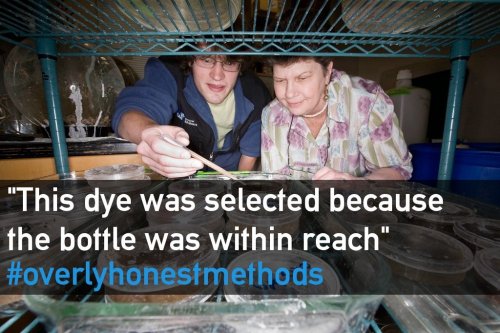
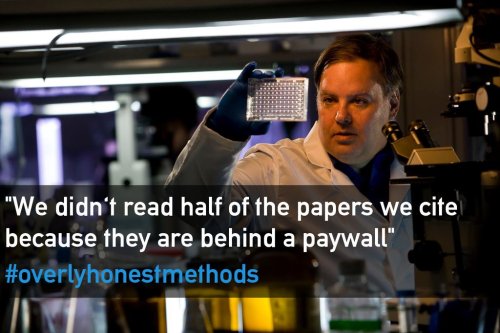
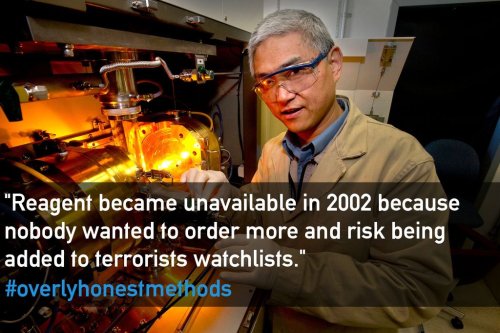
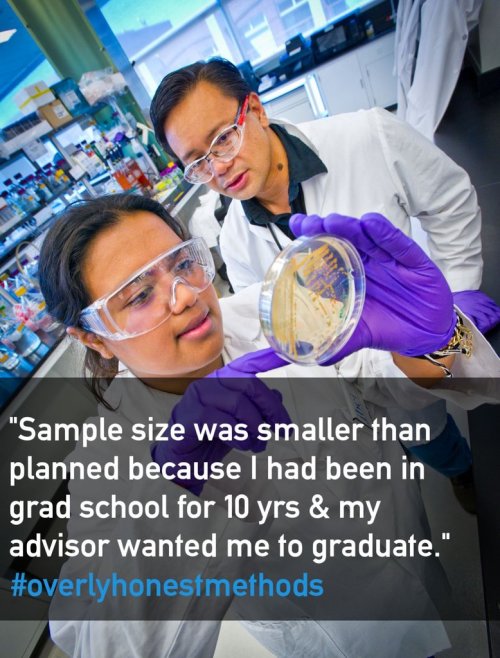
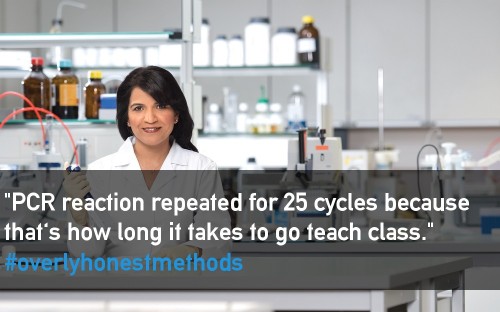


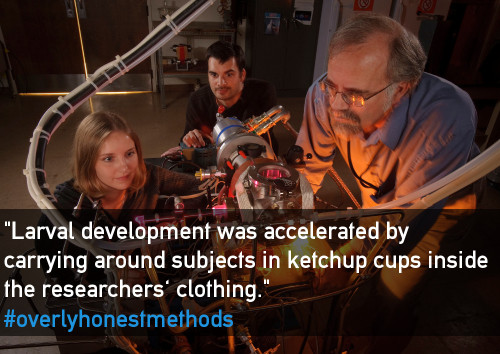
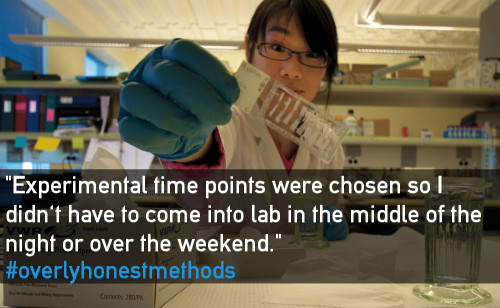
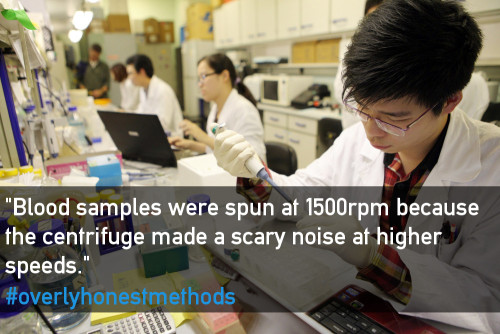
-
 curiousityanddespair liked this · 1 month ago
curiousityanddespair liked this · 1 month ago -
 elldrritchteaa liked this · 2 months ago
elldrritchteaa liked this · 2 months ago -
 xx-leech liked this · 2 months ago
xx-leech liked this · 2 months ago -
 thewritershallprevail liked this · 2 months ago
thewritershallprevail liked this · 2 months ago -
 belladonnabaudelaire liked this · 3 months ago
belladonnabaudelaire liked this · 3 months ago -
 rafaaa07 liked this · 3 months ago
rafaaa07 liked this · 3 months ago -
 0423imi liked this · 3 months ago
0423imi liked this · 3 months ago -
 kaleb-is-definitely-sane liked this · 4 months ago
kaleb-is-definitely-sane liked this · 4 months ago -
 mcsupremacy liked this · 4 months ago
mcsupremacy liked this · 4 months ago -
 chaoticwhispersworld liked this · 4 months ago
chaoticwhispersworld liked this · 4 months ago -
 sashaqueenico17 liked this · 4 months ago
sashaqueenico17 liked this · 4 months ago -
 unitmanual reblogged this · 4 months ago
unitmanual reblogged this · 4 months ago -
 kaffeeundteedanke liked this · 5 months ago
kaffeeundteedanke liked this · 5 months ago -
 lalalala4422 liked this · 5 months ago
lalalala4422 liked this · 5 months ago -
 somanyemptyspaces liked this · 5 months ago
somanyemptyspaces liked this · 5 months ago -
 oil-eclipse liked this · 6 months ago
oil-eclipse liked this · 6 months ago -
 kkuromiii33 liked this · 6 months ago
kkuromiii33 liked this · 6 months ago -
 alipally77 liked this · 6 months ago
alipally77 liked this · 6 months ago -
 aleapple1216 liked this · 6 months ago
aleapple1216 liked this · 6 months ago -
 documentingash liked this · 6 months ago
documentingash liked this · 6 months ago -
 thelostgoldfinch liked this · 6 months ago
thelostgoldfinch liked this · 6 months ago -
 justlurkinhehe reblogged this · 7 months ago
justlurkinhehe reblogged this · 7 months ago -
 litnightsky liked this · 7 months ago
litnightsky liked this · 7 months ago -
 heartfluttered liked this · 7 months ago
heartfluttered liked this · 7 months ago -
 ego-sum-quod-eris liked this · 8 months ago
ego-sum-quod-eris liked this · 8 months ago -
 letscarpe liked this · 8 months ago
letscarpe liked this · 8 months ago -
 m0ssygh0st liked this · 8 months ago
m0ssygh0st liked this · 8 months ago -
 sinfornocos2 liked this · 9 months ago
sinfornocos2 liked this · 9 months ago -
 coffeeadiction0 liked this · 9 months ago
coffeeadiction0 liked this · 9 months ago -
 juggybuggyyy liked this · 9 months ago
juggybuggyyy liked this · 9 months ago -
 zachaandrei reblogged this · 9 months ago
zachaandrei reblogged this · 9 months ago -
 zachaandrei liked this · 9 months ago
zachaandrei liked this · 9 months ago -
 la-reine-vampire liked this · 9 months ago
la-reine-vampire liked this · 9 months ago -
 orphic-studies liked this · 9 months ago
orphic-studies liked this · 9 months ago -
 morimoonie liked this · 10 months ago
morimoonie liked this · 10 months ago -
 sharks-playing-cello liked this · 10 months ago
sharks-playing-cello liked this · 10 months ago -
 outofherdepthandmind liked this · 10 months ago
outofherdepthandmind liked this · 10 months ago -
 cosmiccowboystuddies reblogged this · 11 months ago
cosmiccowboystuddies reblogged this · 11 months ago -
 habibasssmess reblogged this · 11 months ago
habibasssmess reblogged this · 11 months ago -
 habibasssmess liked this · 11 months ago
habibasssmess liked this · 11 months ago -
 towerandchariotlady reblogged this · 11 months ago
towerandchariotlady reblogged this · 11 months ago -
 sofipolilla liked this · 11 months ago
sofipolilla liked this · 11 months ago -
 cassiangoesintheblender liked this · 1 year ago
cassiangoesintheblender liked this · 1 year ago -
 towerandchariotlady reblogged this · 1 year ago
towerandchariotlady reblogged this · 1 year ago -
 aqueva22-blog liked this · 1 year ago
aqueva22-blog liked this · 1 year ago
Here I share some scientific, artistic, literary and more material that I find interesting and important. I'm 30, studied biology in the University of Damascus. هنا اترجم بعض المقالات و المواد العلمية و الادبية و المواضيع التي اجدها مهمة و مثيرة للاهتمام.عمري 30 سنة, ادرس علم احياء بجامعة دمشق
80 posts